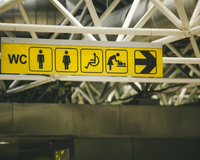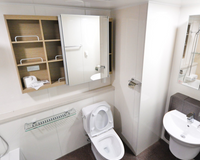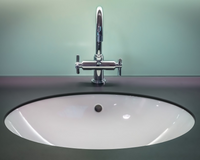The Americans with Disabilities Act (ADA) sets out specific requirements for restroom accessories to ensure that they are accessible to people with disabilities. Some of the key requirements are:
-
Grab Bars: Grab bars must be provided in accessible toilet stalls, and at least one grab bar must be located behind the toilet with a length of at least 36 inches and mounted between 33 and 36 inches above the finished floor. Another grab bar must be mounted on the side wall, with a length of at least 42 inches and mounted between 33 and 36 inches above the finished floor.
-
Toilet Seat Cover Dispensers: Toilet seat cover dispensers must be mounted with the dispenser opening no more than 36 inches above the finished floor, and the dispenser must be located within reach of the grab bars.
-
Soap Dispensers: Soap dispensers must be located within reach of the grab bars and mounted with the dispenser opening no more than 44 inches above the finished floor.
-
Toilet Tissue Dispensers: Toilet tissue dispensers must be mounted with the dispenser opening no more than 36 inches above the finished floor, and the dispenser must be located within reach of the grab bars.
-
Mirrors: Mirrors must be mounted with the bottom edge no more than 40 inches above the finished floor, and at least one mirror must be mounted with the bottom edge no more than 35 inches above the finished floor.
These are just a few of the key requirements for restroom accessories under the ADA. There are many other detailed requirements for things like hand dryers, paper towel dispensers, and waste receptacles that are designed to ensure that people with disabilities can use the restroom with ease and dignity.





